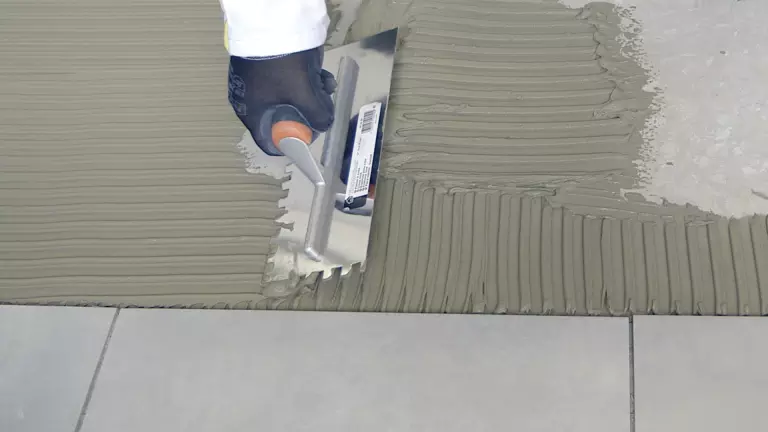When embarking on a tiling project, whether it’s sprucing up your bathroom, kitchen, or embarking on a commercial tiling venture, the success of your project hinges on numerous factors, not least of which is the choice of tile adhesive. With a myriad of options on the market, each boasting different properties and classifications, making an informed decision can seem daunting. This guide aims to demystify tile adhesive classifications, helping you select the perfect adhesive for your tiling needs.
Understanding Tile Adhesive Classifications
Tile adhesives are categorised based on European Standards (EN) that define their performance characteristics, such as flexibility and tensile adhesion strength. These classifications are crucial for choosing an adhesive that matches the specific requirements of your tiling project.
Flexibility: The S1 and S2 Classifications
Flexibility is a key attribute of tile adhesive, especially in environments where the substrate might move or expand.
- S1 Adhesives have a flexibility rating of at least 2.5mm. This means they can accommodate slight movements of the substrate, making them suitable for areas with minimal expansion and contraction. S1 adhesives are often used in residential settings where the environmental demands are moderate.
- S2 Adhesives boast a higher flexibility rating, with at least 5mm of movement accommodation. Their high deformability makes them ideal for use in areas prone to significant movement, heavy foot traffic, or extreme temperature variations. S2 adhesives are the go-to for outdoor terraces, commercial spaces, or heated floors.
Tensile Adhesion Strength: Understanding C1 and C2
Another critical factor in selecting a tile adhesive is its tensile adhesion strength, which is categorized into C1 and C2.
- C1 Adhesive denotes a standard adhesion strength suitable for areas that do not experience heavy stress. C1 adhesives are typically used for wall and floor tiling in residential projects where the demands on the adhesive are not excessively high.
- C2 Adhesive represents adhesives with improved or high adhesion strength. These are preferred for demanding installations, such as tiling large format tiles or areas with heavy traffic, where a stronger bond is essential for durability.
Additional Properties: E, F, and T
Tile adhesives can also have additional properties, indicated by the letters E, F, and T, which stand for:
- E (Extended open time): Adhesives with this property remain workable for longer periods, allowing for adjustments and alignments during the installation process.
- F (Fast setting): Ideal for projects that require a quick turnaround, fast-setting adhesives enable the tiled area to be used shortly after installation.
- T (Reduced slip): These adhesives are crucial for wall tiling, ensuring tiles stay in place without slipping as the adhesive sets.
Choosing the Right Adhesive for Your Project
Selecting the appropriate adhesive involves more than just picking a product off the shelf. Consider the type of tiles (e.g., ceramic, porcelain, natural stone), tile size and weight, the installation location (indoors vs. outdoors, wet areas), and the substrate’s nature (concrete, plywood, underfloor heating).
For instance, outdoor or high-moisture areas would benefit from an S2, C2 adhesive for its flexibility and strength, ensuring longevity despite environmental stresses. Conversely, a light residential project with minimal substrate movement might only require an S1, C1 adhesive.
Conclusion
The right tile adhesive is paramount to the success and durability of your tiling project. By understanding the significance of adhesive classifications—S1, S2, C1, C2, and additional properties like E, F, and T—you can make an informed choice that ensures your tiles not only look great but stand the test of time. Remember, a well-chosen adhesive is the foundation of a flawless finish for any tiling project.
